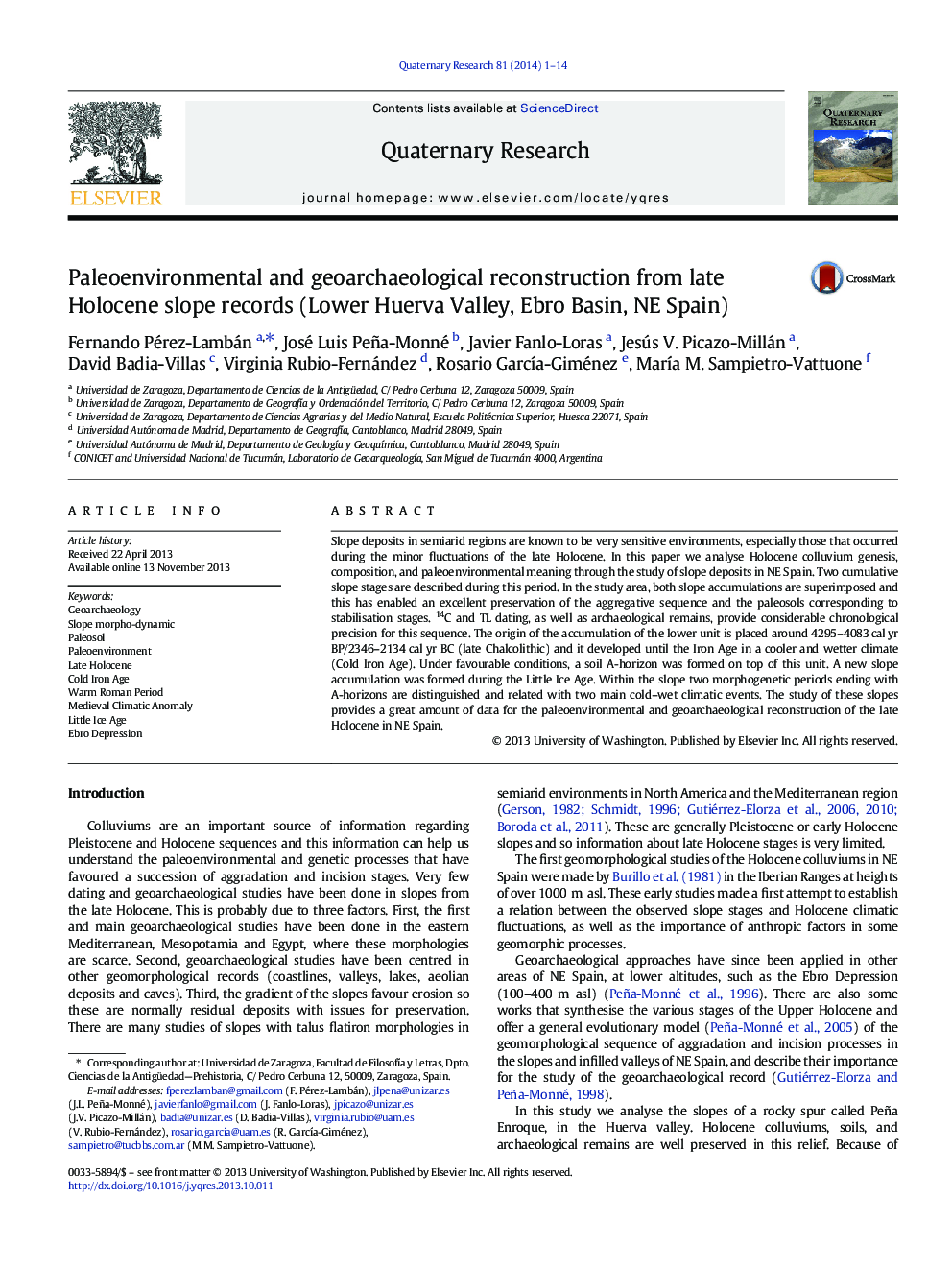| Article ID | Journal | Published Year | Pages | File Type |
|---|---|---|---|---|
| 1045340 | Quaternary Research | 2014 | 14 Pages |
Abstract
Slope deposits in semiarid regions are known to be very sensitive environments, especially those that occurred during the minor fluctuations of the late Holocene. In this paper we analyse Holocene colluvium genesis, composition, and paleoenvironmental meaning through the study of slope deposits in NE Spain. Two cumulative slope stages are described during this period. In the study area, both slope accumulations are superimposed and this has enabled an excellent preservation of the aggregative sequence and the paleosols corresponding to stabilisation stages. 14C and TL dating, as well as archaeological remains, provide considerable chronological precision for this sequence. The origin of the accumulation of the lower unit is placed around 4295-4083 cal yr BP/2346-2134 cal yr BC (late Chalcolithic) and it developed until the Iron Age in a cooler and wetter climate (Cold Iron Age). Under favourable conditions, a soil A-horizon was formed on top of this unit. A new slope accumulation was formed during the Little Ice Age. Within the slope two morphogenetic periods ending with A-horizons are distinguished and related with two main cold-wet climatic events. The study of these slopes provides a great amount of data for the paleoenvironmental and geoarchaeological reconstruction of the late Holocene in NE Spain.
Keywords
Related Topics
Physical Sciences and Engineering
Earth and Planetary Sciences
Geology
Authors
Fernando Pérez-Lambán, José Luis Peña-Monné, Javier Fanlo-Loras, Jesús V. Picazo-Millán, David Badia-Villas, Virginia Rubio-Fernández, Rosario GarcÃa-Giménez, MarÃa M. Sampietro-Vattuone,
